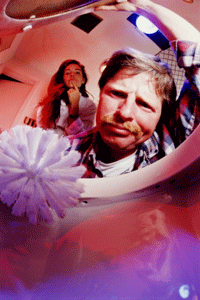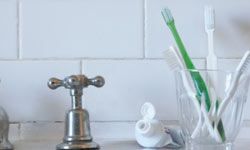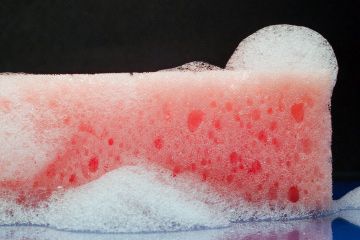It's safe to assume that scrubbing the toilet doesn't appear on anyone's list of favorite household chores, but cleaning the commode doesn't have to stink -- pun intended. Keeping the bowl stain-free is simple: Set a small amount of time aside every few days to clean, and suddenly the task won't feel so overwhelming. In fact, you can use a product you already have in your kitchen to help get you started.
Vinegar, one of the most versatile products in your kitchen pantry, offers an economical and effective way to get rid of stubborn toilet stains. Stains are often caused by alkaline deposits, and they can be removed by emptying three cups of vinegar into the pot and scrubbing the bowl with a toilet brush.
Advertisement
Vinegar can also prevent future stains from appearing. Fight rings by pouring up to two cups of white vinegar in the toilet once a month. If stains persist, turn off the water valve and drain the toilet. To do this, turn the shutoff valve clockwise. Once it stops, flush and use a plunger to remove any remaining water from the bowl. Place cloths or extra-strength paper towels soaked in white vinegar around the edges of the toilet bowl, and let them sit for several hours until the stains begin to dissolve. Scrub any remnants away with a nylon toilet brush. Turn the water supply back on and flush once the bowl is clean.
Trisodium phosphate, a heavy-duty cleaning powder that can be found at your local home improvement store, is another great product that can be used to remove tough toilet stains. Measure one gallon of warm water with one tablespoon of trisodium phosphate and mix well. Soak a cloth in the solution and rub stains until they're gone.
When cleaning with borax powder, first flush the toilet after shutting off the water supply to the tank. When the toilet is empty, sprinkle the powder directly onto stains and scrub the bowl using a toilet brush. Let borax sit for a half hour after scrubbing, and when stains are removed, turn the water supply on and flush.
To clean a toilet with bleach, measure a half cup of dry bleach powder and allow it to sit in the bowl for up to two hours. Flush once you see that stains are removed.
As a last resort, use a pumice stone and a toothbrush to get rid of extreme toilet stains. Keeping one end of the pumice damp, rub the stone across toilet rings, but be sure to do so cautiously. Pumice can easily scratch a toilet bowl, leaving it damaged beyond repair. Once pumice begins to build up on the sides of the toilet bowl, use a toothbrush to gently rub all deposits away.
Advertisement




